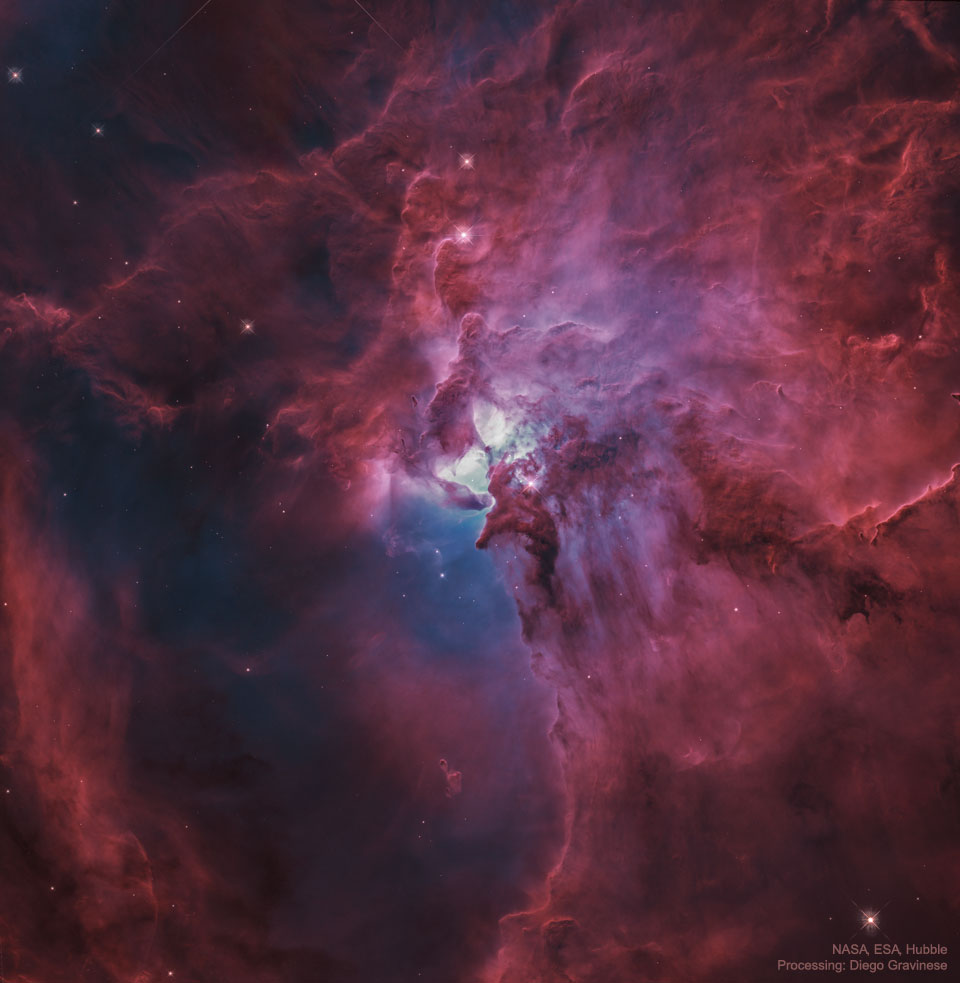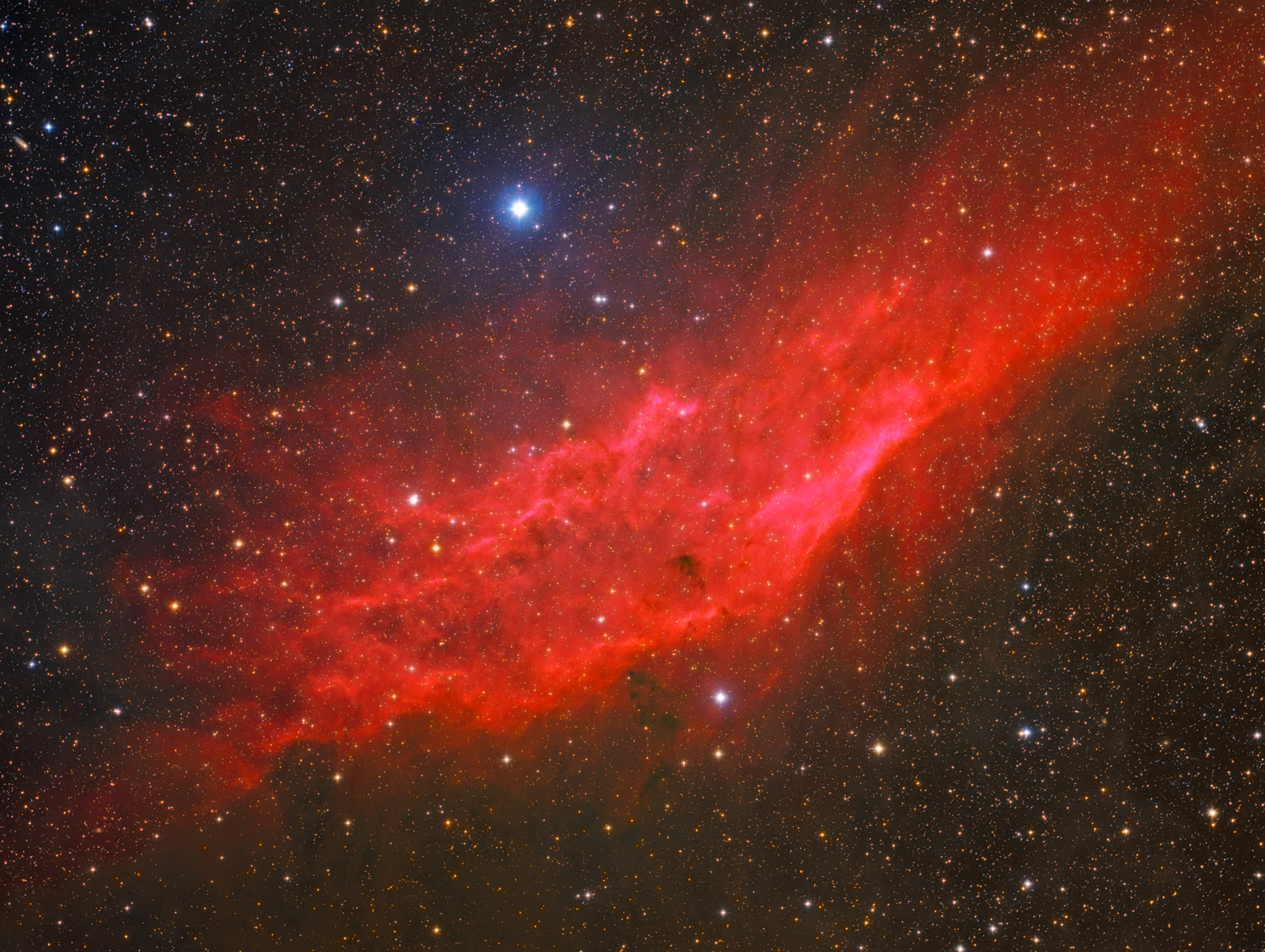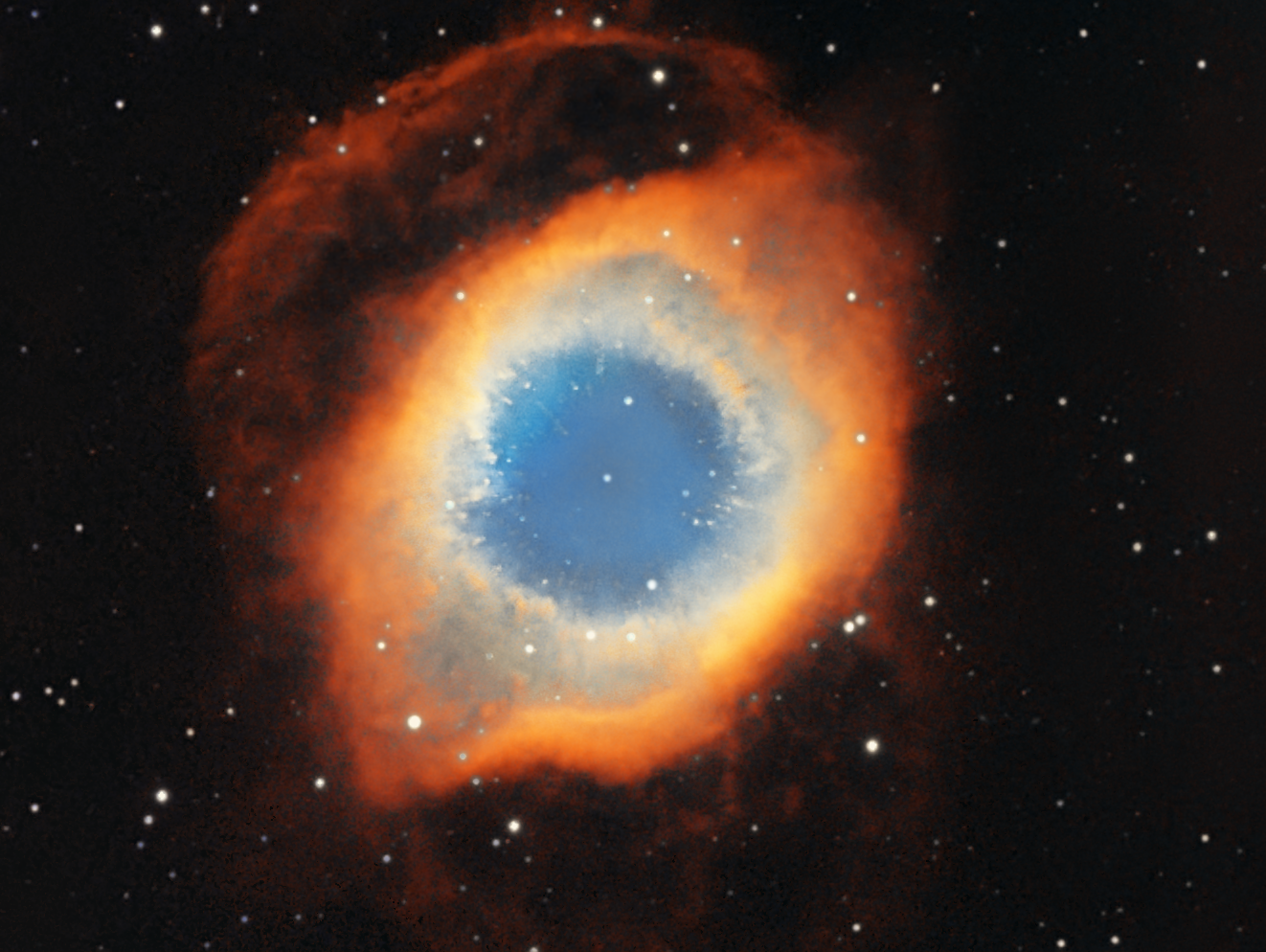Blog
The center of the Lagoon Nebula is a whirlwind of spectacular star formation. Visible near the image center, at least two long funnel-shaped clouds, each roughly half a light-year long, have been formed by extreme stellar winds and intense energetic starlight. A tremendously bright nearby star, Hershel 36, lights the area. Vast walls of dust hide and redden other hot young stars. As energy from these stars pours into the cool dust and gas, large temperature differences in adjoining regions can be created generating shearing winds which may cause the funnels. This picture, spanning about 15 light years, features two colors detected by the orbiting Hubble Space Telescope. The Lagoon Nebula, also known as >M8, lies about 5000 light years distant toward the constellation of the Archer Sagittarius.

Alanis Nadine Morissette (born June 1, 1974) is a Canadian-American singer, songwriter, record producer, and actress. Known for her emotive mezzo-soprano voice, Morissette began her career in Canada in the early 1990s with two mildly successful dance-pop albums. Afterwards, as part of a recording deal, she moved to Holmby Hills, Los Angeles and in 1995 released Jagged Little Pill, a more rock-oriented album which sold more than 33 million copies globally and is her most critically acclaimed work. Her follow-up album, Supposed Former Infatuation Junkie, was released in 1998.
Morissette assumed creative control and producing duties for her subsequent studio albums, including Under Rug Swept (2002), So-Called Chaos(2004), Flavors of Entanglement (2008), and Havoc and Bright Lights (2012). Her 9th album, Such Pretty Forks in the Road is set to be released in 2020. Morissette has sold more than 75 million records worldwide and has been dubbed the “Queen of Alt-Rock Angst” by Rolling Stone.
more...Ronald David Wood (born 1 June 1947) is an English rock musician, songwriter, multi-instrumentalist, artist, author and radio personality best known as a member of The Rolling Stones since 1975, as well as a member of Faces and the Jeff Beck Group.
Wood began his career in 1964, when he joined The Birds (not to be confused with the American band The Byrds) on guitar. He then joined the modgroup The Creation, but remained with the group only for a short time and appeared on a small number of singles. Wood joined the Jeff Beck Group in 1967 as a bass player. The band released two albums, Truth and Beck-Ola, both seminal albums.
The group split in 1969, and Wood departed along with lead vocalist Rod Stewart to join former Small Faces members Ronnie Lane, Ian McLagan and Kenney Jones in a new group named Faces. The group found great success in the UK and mainland Europe, though were relegated to cult status in the United States. Faces released its debut album, First Step, in 1970. The group went on to release Long Player and A Nod Is As Good As a Wink… to a Blind Horse in 1971. Their last LP, titled Ooh La La, was released in 1973. Wood co-wrote and sang the album’s popular title track.
As the group began to split, Wood started several solo projects, eventually recording his first solo LP, I’ve Got My Own Album to Do, in 1974. The album featured bandmate McLagan as well as former Beatle George Harrison and Keith Richards of The Rolling Stones, a longtime friend of Wood’s. Richards soon invited Wood to join the Rolling Stones, after the departure of Mick Taylor. Wood joined in 1975, but was not officially inducted as a member until bassist Bill Wyman‘s departure in 1993.
Besides I’ve Got My Own Album to Do, Wood has recorded several other solo efforts. Now Look was released in 1975, and peaked at No. 118 on Billboard, and Wood collaborated with Ronnie Lane for the soundtrack album Mahoney’s Last Stand. He released Gimme Some Neck in 1979, which hit No. 45 in the US, 1234 was released in 1981, peaking at No. 164. He released Slide on This in 1992, Not for Beginners came out in 2002. and I Feel Like Playing in 2010. As a member of the Rolling Stones, Wood was inducted into the Rock and Roll Hall of Fame in 1989, and was inducted a second time, as a member of Faces, in April 2012.
more...Herbie Lovelle (1 June 1924 – April 8, 2009) was an American drummer, who played jazz, R&B, rock, and folk. He was also a studio musician and an actor.
Lovelle’s uncle was the drummer Arthur Herbert. Lovelle began his career with the trumpeter, singer and band leader Hot Lips Page in the late 1940s, then played in the 1950s with the saxophonist Hal Singer, Johnny Moore‘s Three Blazers and the pianist Earl Hines. Through working for both Lucky Thompson and Jimmy Rushing of Count Basie’s Orchestra, he became house drummer at the Savoy Ballroom in New York City for much of the 1950s. He toured with the tenor saxophonist Arnett Cobb and the pianist Teddy Wilson in 1954. In 1959 he contributed to the pianist Paul Curry’s album Paul Curry Presents the Friends of Fats, released on the Golden Crest label.
In the early years of television, he performed with the King Guion Orchestra on the Jerry Lester Show and the Ed Sullivan Show. In 1966, he was the lead drummer for the Sammy Davis, Jr. TV show.
Lovelle began playing more R&B in the 1950s and worked as a studio musician, often with Sam Taylor. He played on albums by Bob Dylan (The Freewheelin’ Bob Dylan), Pearls Before Swine, Eric Andersen, David Blue, John Denver, Tom Rush, B. B. King, John Martyn (Stormbringer!), the Strangeloves, the McCoys, and the Monkees. He continued working as a studio musician well into the 1980s.
In 1976, he produced the first album by Stuff, which went platinum in Japan. He also played drums in the 1976 revival of Guys and Dolls.
From the 1980s on, he acted in film and television, including on Law & Order (1995–2004). His film credits include Bella (2006), Mitchellville (2004) (Sundance), The Rhythm of the Saints (2003), Don’t Explain (2002), The Curse of the Jade Scorpion (2001), Down to Earth (2001), Girlfight (2000), Maximum Risk (1996), Getting Away with Murder (1996), White Lies (1996), Bleeding Hearts(1994), The Paper (1994), Running on Empty (1988), Death Wish III (1985), A Man Called Adam (1966). His TV credits include Into the Fire (2005), How Do You Spell Belief? (2005), Kingpin Rising (2005), Third Watch (2 episodes, 2005), and Law & Order TV (1995–2004).
https://www.youtube.com/watch?v=hRJZDKnmtgk
more...Lafayette Leake (June 1, 1919 – August 14, 1990) was a blues and jazz pianist, organist, vocalist and composer who played for Chess Records as a session musician, and as a member of the Big Three Trio, during the formative years of Chicago blues. He played piano on many of Chuck Berry‘s recordings.
Leake was born in Winona, Missouri, in 1919. Information about his early years is sparse, but in the early 1950s he joined the Big Three Trio (replacing Leonard Caston) and began his association with Chess Records, where he worked closely with bassist, producer, and songwriter Willie Dixon.
Leake played piano on One Dozen Berrys, Chuck Berry’s second album, released in 1958 by Chess. He was then on Chuck Berry Is on Top; Leake (not Berry’s longtime bandmate Johnnie Johnson) played the prominent piano on the classic original rendition of “Johnny B. Goode“, as well as “Rock and Roll Music“. Leake played on numerous other Chess sessions from the ’50s through the ’70s, backing many of the Chess greats, including Sonny Boy Williamson, Otis Rush, Junior Wells, and Little Walter. Leake gave Chicago blues musician Harmonica Hinds his first harmonica lesson on the street in Toronto, Ontario.
During the 1960s Willie Dixon formed the Chicago Blues All-Stars, with Leake as resident pianist. Leake toured and recorded with this group until the mid-1970s. After that he did little recording or touring, although he appeared with Chuck Berry at the Chicago Blues Festival in 1986 and recorded “Hidden Charms” with Willie Dixon in 1988.
more...The California Nebula (NGC 1499) is an emission nebula located in the constellation of Perseus. It is so named because it appears to resemble the outline of the US State ofCalifornia on long exposure photographs. It is almost 2.5° long on the sky and, because of its very low surface brightness, it is extremely difficult to observe visually. It lies at a distance of about 1,000 light years from Earth. The California Nebula was discovered by E. E. Barnard in 1884.
Telescope: Takahashi BabyQ 85
Mount: Skywatcher HEQ5 Pro
Camera: QSI 683 Momo
Filters: Astrodon Gen II, LRGB + Ha
Subexposures: 300sec bin1 Lum, 300sec bin2 Color + Ha
Total Exposure: 7h
Location: Mt. Parnon, Greece

John Henry Bonham (31 May 1948–25 September 1980) was an English musician and songwriter, best known as the drummer for the English rock band Led Zeppelin. Esteemed for his speed, power, fast bass drumming, distinctive sound, and feel for the groove,[1] he is regarded as one of the greatest and most influential rock drummers in history.
Bonham was born in 1948 in Redditch, Worcestershire and took up drums at the age of five, receiving a snare drum at the age of 10 and a full drum set at the age of 15. He played with multiple local bands both at school and following school, eventually playing in two different bands with future bandmate Robert Plant. Following the demise of the Yardbirds in 1968, Bonham joined Plant, guitarist Jimmy Page and bassist John Paul Jones to form Led Zeppelin. With the band, Bonham mostly showcased a hard-hitting hard rock style, but also handled funk and Latin-influenced grooves in later releases. Like Keith Moon of the Who, Bonham’s drum set grew in size following the band’s 1969 concert tours, including congas or timpanis and a gong. His drum solo, “Moby Dick“, was featured on the group’s second album and was a staple of their concerts, often lasting over 20 minutes. Outside of Led Zeppelin, Bonham played drums for other artists, including the Family Dogg, Screaming Lord Sutch, Lulu, Jimmy Stevens and Wings. Bonham played with Led Zeppelin until his death at the age of 32, in September 1980 following a day of heavy drinking. The surviving members disbanded the group out of respect for Bonham after his passing.
A mostly self-taught drummer, Bonham’s influences included Max Roach, Gene Krupa and Buddy Rich. Bonham was also close with Vanilla Fudgedrummer Carmine Appice, who introduced him to Ludwig drums. While primarily known for his hard rock style during his lifetime, Bonham’s reputation as a drummer has grown beyond hard rock following his death; he is now seen as one of the greatest drummers of all time. He has influenced numerous drummers, including Dave Grohl, Chad Smith, Dave Lombardo and Mike Portnoy. He was posthumously inducted into the Rock and Roll Hall of Fame in 1995 as a member of Led Zeppelin. In 2016, Rolling Stone ranked him first in its list of the “100 Greatest Drummers of All Time”
more...Louis Hayes (born May 31, 1937) is an American jazz drummer and band leader.
Louis Sedell Hayes was born to a father who played drums and piano. His mother played the piano. Hayes got his first drum set at age 10. He refers to the early influence of hearing jazz, especially big bands on the radio. His main influence was Philly Joe Jones and he was mentored by Jo Jones. His three main associations were with Horace Silver‘s Quintet (1956–59), the Cannonball Adderley Quintet (1959–65), and the Oscar Peterson Trio (1965–67). Hayes often joined Sam Jones, both with Adderley and Peterson, and in freelance settings.
When he was a teenager, he led a band in Detroit clubs before he was 16. He worked with Yusef Lateef and Curtis Fuller from 1955 to 1956. He moved to New York in August 1956 to replace Art Taylor in the Horace Silver Quintet and in 1959 joined the Cannonball Adderley Quintet, with which he remained until mid-1965, when he succeeded Ed Thigpen in the Oscar Peterson Trio. He left Peterson in 1967, and formed a series of groups, which he led alone or with others; among his sidemen were Freddie Hubbard, Joe Henderson, Kenny Barron, and James Spaulding. He returned to Peterson in 1971.
The Louis Hayes Sextet, formed in 1972, became, in 1975, the Louis Hayes-Junior Cook Quintet and the Woody Shaw-Louis Hayes Quintet (Cook remained as a sideman until Rene McLean joined); in its last form the quintet played successful engagements throughout Europe and (without McLean) acted as the host group when, in 1976, Dexter Gordon visited the U.S. for the first time in many years. After Shaw left the group in 1977, Hayes continued to lead it as a hard-bop quintet.
https://www.youtube.com/watch?v=3Xyj4opiqO8
more...Albert “Tootie” Heath (born May 31, 1935) is an American jazz hard bop drummer, the brother of tenor saxophonist Jimmy Heath and the double-bassist Percy Heath.
He first recorded in 1957 with John Coltrane. From 1958 to 1974 he worked with, among others, J. J. Johnson, Wes Montgomery, Art Farmer and Benny Golson‘s Jazztet, Cedar Walton, Bobby Timmons, Kenny Drew, Sonny Rollins, Dexter Gordon, Johnny Griffin, Herbie Hancock, Friedrich Gulda, Nina Simone, and Yusef Lateef. In 1975, he, Jimmy and Percy formed the Heath Brothers. He remained with the group until 1978, then left to freelance. He has recorded extensively throughout his career.
Among his many workshop and classroom teaching assignments, Tootie Heath is a regular instructor at the Stanford Jazz Workshop.
Tootie Heath is now the producer and leader of The Whole Drum Truth, a jazz drum ensemble featuring Ben Riley, Ed Thigpen, Jackie Williams, Billy Hart, Charlie Persip, Leroy Williams and Louis Hayes.
https://www.youtube.com/watch?v=mDnJejehJ3M
more...James Wesley “Red” Holloway (May 31, 1927 – February 25, 2012) was an American jazz saxophonist.
Born in Helena, Arkansas, United States, Holloway started playing banjo and harmonica, switching to tenor saxophone when he was 12 years old. He graduated from DuSable High School, where he had played in the school big band with Johnny Griffin and Eugene Wright, and attended the Conservatory of Music, Chicago. He joined the Army when he was 19 and became bandmaster for the U.S. Fifth Army Band, and after completing his military service returned to Chicago and played with Yusef Lateef and Dexter Gordon, among others. In 1948, he joined blues vocalist Roosevelt Sykes, and later played with other rhythm & blues musicians such as Willie Dixon, Junior Parker, and Lloyd Price.
In the 1950s, he played in the Chicago area with Billie Holiday, Muddy Waters, Chuck Berry, Ben Webster, Jimmy Rushing, Arthur Prysock, Dakota Staton, Eddie “Cleanhead” Vinson, Wardell Gray, Sonny Rollins, Red Rodney, Lester Young, Joe Williams, Redd Foxx, B.B. King, Bobby Bland, and Aretha Franklin. During this period, he also toured with Sonny Stitt, Memphis Slim and Lionel Hampton. He became a member of the house band for Chance Records in 1952. He subsequently appeared on many recording sessions for the Chicago-based independents Parrot, United and States, and Vee-Jay.
more...The Helix Nebula, also known as The Helix or NGC 7293, is a large planetary nebula (PN) located in the constellation of Aquarius. Discovered by Karl Ludwig Harding, probably before 1824, this object is one of the closest to the Earth of all the bright planetary nebulae. The estimated distance is about 215 parsecs or 700 light-years. It is similar in appearance to the Ring Nebula, whose size, age, and physical characteristics are similar to the Dumbbell Nebula, varying only in its relative proximity and the appearance from the equatorial viewing angle. The Helix has often been referred to as the Eye of God on the Internet, since about 2003. Equinox ED120, ATIK314L, Baader Narrowband Filters: Ha, Si, O3, Total Exposure: 8 Hours, Location: Mt Parnon.

More Posts
- Flamenco Fridays with Carlos Montoya
- Daily Roots with Marcus Reid
- The Cosmos with M78-Barnards Loop-LDN 1622
- Tony Williams Day
- Grover Washington Jr Day
- Manu Dibango Day
- Toshiko Akiyoshi Day
- World Music with Seun Anikulapo Kuti
- Daily Roots with the Jewels
- The Cosmos with N63A
- McCoy Tyner Day
- Big Mama Thornton Day
- Pérez Prado Day
- World Fusion with Lakou Mizik + 79rs Gang feat. Régine Chassagne & Pres. Hall Jazz Band
- Daily Roots with Pat Francis
- The Cosmos with NGC 5468
- Bob Cranshaw Day
- Ray Nance Day
- Guitar Slim Day
- World Music with Brooklyn Raga Massive